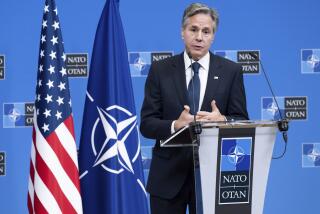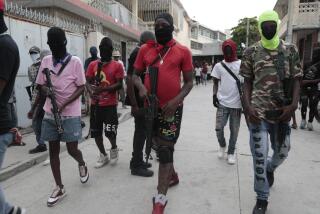To Avoid Calamities, Boost African Intervention Force
- Share via
Ten years after the genocide that killed at least 800,000 Rwandans, is the world better prepared to stop future such tragedies? Regrettably, no.
It is still the case that only the United States, Britain and France have the capacity for rapid response on the scale likely to be needed. But, as in 1994, they may not have the will or perhaps even the available forces to intervene. To begin to repair this unacceptable situation, it is necessary to build additional international military strength, particularly in Africa, to respond swiftly and effectively to crises on a continent where, sadly, outsiders are often loath to tread.
In 1996, the Clinton administration launched the African Crisis Response Initiative. The goal was to train and equip seven to 10 battalions of African soldiers that -- with airlift provided by others -- could undertake complex humanitarian interventions effectively.
More than 10,000 troops have now been trained under this program and its successor, though so far preparation has focused mostly on easier peacekeeping missions rather than on forcible operations. The Clinton administration also conducted a temporary but major program to prepare West African units for service in Sierra Leone. But up to now, all these programs have been too modest in scale.
Thankfully, a new initiative is also underway, though the U.S. is standing on the sidelines. During a February summit of the African Union, the European Union pledged $300 million toward the creation, training and equipping of five regional, multinational standby brigades. The goal is that they should be able to handle traditional peacekeeping by 2005 and more complex peace enforcement or intervention missions by 2010. Principal credit must go to African nations themselves, which led in establishing the brigades, having learned from 1994 that certain human rights abuses are so extreme as to require external intervention in the internal affairs of sovereign states.
The idea of five rapidly deployable standby brigades, built from battalions of individual countries but each led by a multinational headquarters with adequate support elements, is precisely the right one. One such brigade, with about 3,000 troops, could protect a threatened city or refugee camp or patrol a cease-fire line. Acting together, several of the brigades could even help forcibly to quell mass killing such as Rwanda suffered a decade ago. Five brigades is not enough for the long term. But this initiative is a good start.
The U.S. should accelerate the schedule by providing more substantial training and equipment. The current $15 million a year from the Clinton-launched program needs to expand dramatically to the range of $100 million a year -- real money, to be sure, but less than what it is currently spending daily in Iraq.
More to Read
Sign up for Essential California
The most important California stories and recommendations in your inbox every morning.
You may occasionally receive promotional content from the Los Angeles Times.










